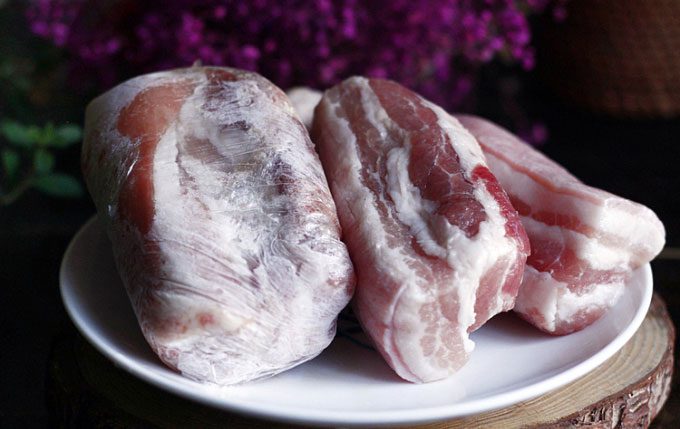When purchasing food, it’s essential to choose reputable sources, wash items thoroughly, cook them properly, store them carefully, and maintain cleanliness in hand hygiene and cooking equipment to prevent contamination by Salmonella bacteria.
Since March 11, 2023, 7 out of 358 individuals in Nha Trang have tested positive for Salmonella bacteria, a dangerous gastrointestinal toxin. Salmonella can be found in any type of raw animal meat, most commonly poultry such as chicken, duck, and goose. During food preparation, failure to adhere to safe food handling practices, such as washing hands properly, allows bacteria from raw food to contaminate cooked food, leading to rapid bacterial growth. The higher the bacterial count, the greater the level of toxins produced.
Associate Professor Nguyen Anh Tuan, Head of the Gastrointestinal Endoscopy Department at Military Central Hospital 108, emphasizes that to ensure food is free from Salmonella contamination, it is crucial to follow certain safety measures and hygiene protocols. This includes thoroughly washing foods such as vegetables, fruits, and animal products like meat, fish, eggs, and milk before cooking or consumption. Additionally, it is important to use separate kitchen utensils, such as knives, cutting boards, and dishes for raw and cooked foods to prevent bacterial cross-contamination.
Use clean water when washing or preparing food, especially for raw products. When cooking, ensure that food reaches the appropriate temperature and doneness to kill bacteria, particularly when preparing items like meat, eggs, and dairy products. Store food in the refrigerator at suitable temperatures and consume it shortly after purchase to avoid bacterial growth.
Always check the expiration dates and condition of food before use. Furthermore, keep hands clean by washing them frequently, especially before and after handling food, and maintain cleanliness and hygiene in the kitchen, including wiping down work surfaces, cooking equipment, and utensils.

Food in the refrigerator needs to be stored carefully. (Photo: Bui Thuy).
Salmonella bacteria can thrive in a refrigerator if ideal conditions are met. While the temperature is generally lower in refrigerators, not all types of bacteria are killed at these temperatures. If Salmonella-contaminated food is placed next to other food items in the fridge without proper packaging, bacteria can spread from one product to another. This is especially true if food leaks or is not stored in tightly sealed packaging.
Therefore, to ensure food safety in the refrigerator and prevent the growth and spread of Salmonella bacteria, you should take the following measures:
Ensure that the refrigerator is set to a safe temperature, typically around 4°C (40°F) or lower. Store food in sealed packaging or containers to prevent bacteria from spreading between products. Handle and prepare food properly before storing it in the refrigerator, ensuring that raw food is stored on the bottom shelf to prevent juices from dripping and raising the temperature of food above it. Regularly check food items, and immediately discard any that show signs of spoilage or contamination.
The time required to completely kill Salmonella depends on the temperature and processing environment. Common temperatures and times for killing Salmonella include:
- At 70°C (158°F): Salmonella can be killed after about 2-3 minutes.
- At 74°C (165°F): Salmonella is usually killed immediately once the food reaches this temperature during cooking.
At lower temperatures, such as in a refrigerator at 4°C (40°F) or below, Salmonella can still survive, but its growth rate will be slower. Furthermore, Salmonella can also be eliminated through methods such as freezing or using disinfectant chemicals.
Consumers should choose to purchase food from reliable sources that are closely monitored by food safety authorities.




















































